- All Locomotives
- Garratt
- Fairlie
- George England
- hunslet
- Other Steam
- Diesel
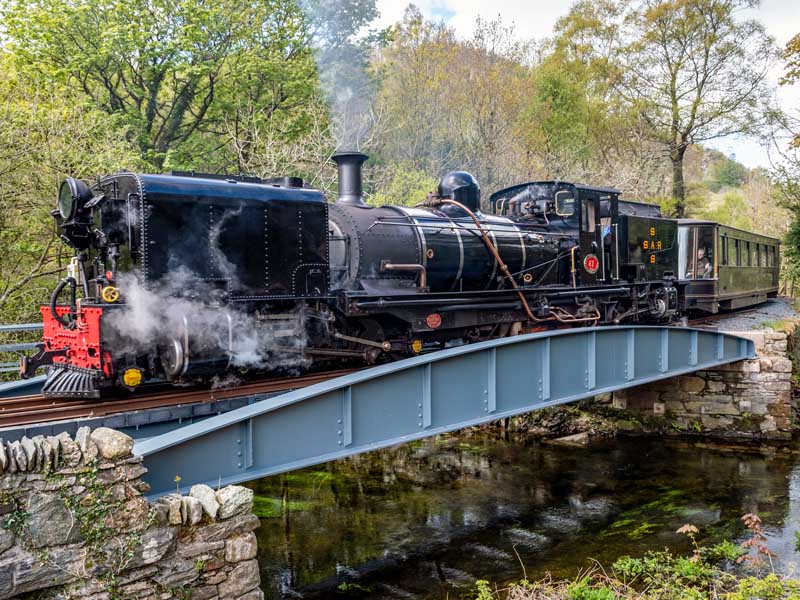
NG/G16 No.87
Built 1935
NG/G16 87 was built in Belgium under license, by Cockerill. Its work in South Africa ended in 1987 and it later came to the UK. However, like No.130, it was then stored for many years before coming to the Ffestiniog & Welsh Highland Railways. No.87’s restoration from virtually scrap condition was financed by a private sponsor.
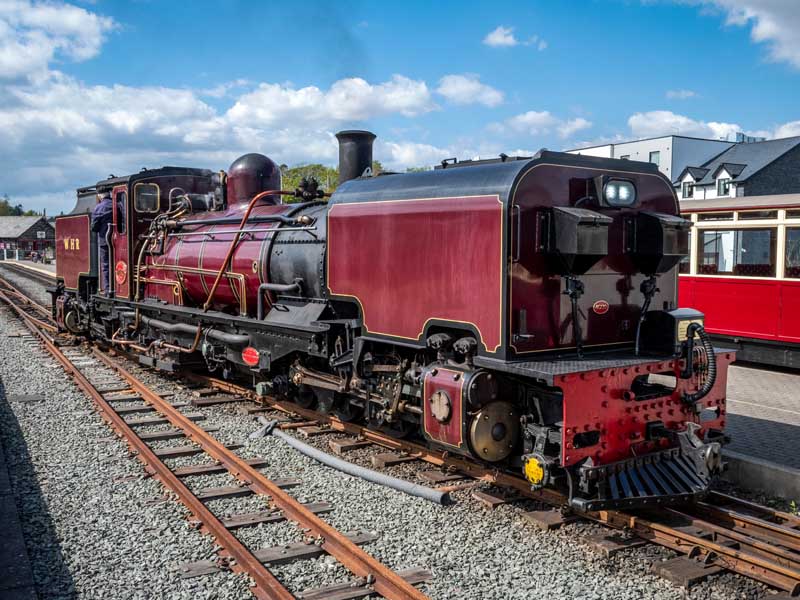
NG/G16 No.130
Built 1951
NG/G16 130 was built in Manchester and worked in South Africa until 1985. It returned to the UK, but was put into store after plans fell through. It came to the Ffestiniog & Welsh Highland Railways for major restoration sponsored by a private individual. It entered service in April 2021 and has recently been donated to the railway.
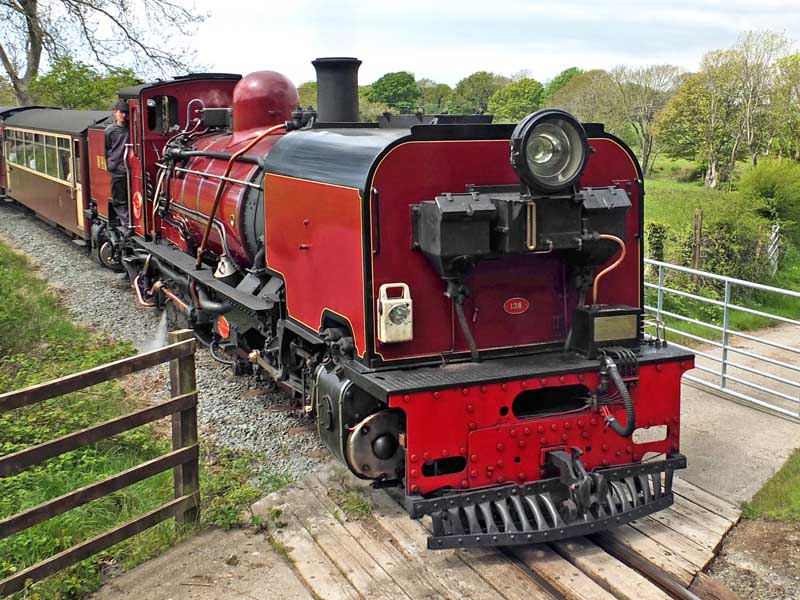
NG/G16 No.138
Built 1958
NG/G16 138 was the first Garratt locomotive to work on the new Welsh Highland Railway in the 1990s. It had spent its working life in South Africa, being overhauled there before returning to the UK. For a time it carried green livery and the name ‘Millennium’, in recognition of funding received from the Millennium Commission.
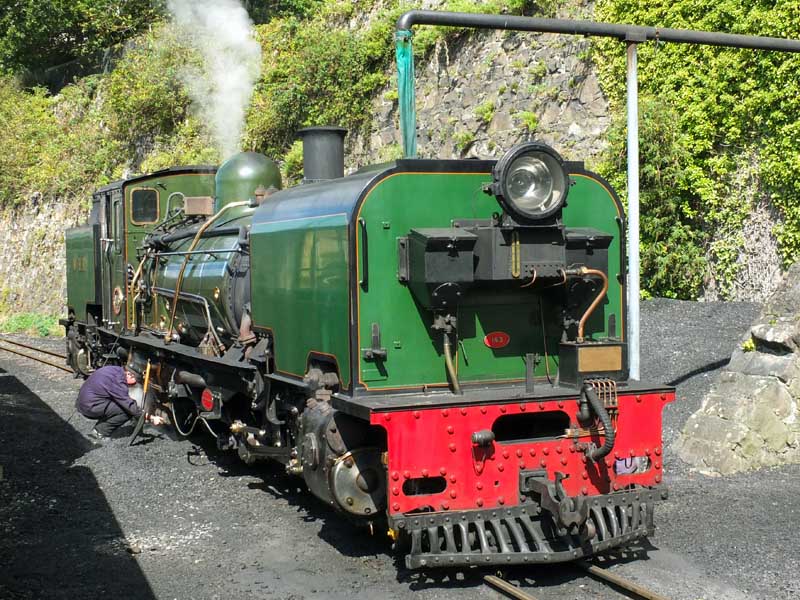
NG/G16 No.143
Built 1958
NG/G16 143 was the last Garratt locomotive built by Beyer Peacock in Manchester. Originally designed for Namibia, it spent its working life in South Africa. Following withdrawal, it came to the UK (with No.138) to run on the Welsh Highland Railway. Initially running in black, 143 is now dark green.

NG15 No.134
Built 1952
NG15 No.134 has been rebuilt over a 20-year period as a Welsh Highland Railway Society-funded volunteer project. This is the largest non-articulated locomotive on the F&WHR. No.134’s huge tender gives it a large coal and water capacity. Due into traffic soon, its first appearance in steam is eagerly awaited.
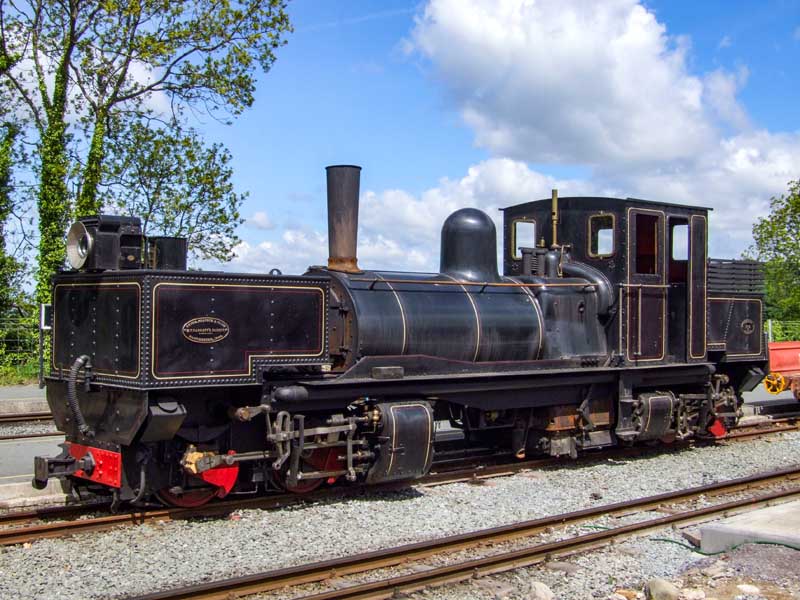
K1
Built 1909
‘K1’ was the world’s first Garratt locomotive. Built by Beyer Peacock of Manchester to work in Tasmania, ‘K1’ came to the Ffestiniog in 1966, but was too big for the railway. Eventually restored to steam, it worked trains on the WHR before going on loan to the Statfold Barn Railway.
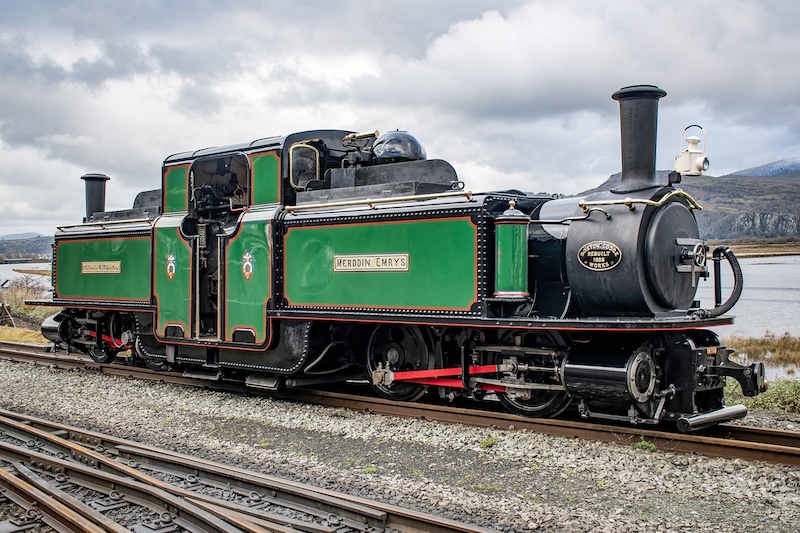
Merddin Emrys
Built 1879
Named after the wizard Merlin from Arthurian legend, Double Fairlie ‘Merddin Emrys’ was the first locomotive to be built at Boston Lodge in 1879. This was a huge achievement at the time for an independent narrow-gauge railway many miles from the industrial centres of the day. It remains in regular service.
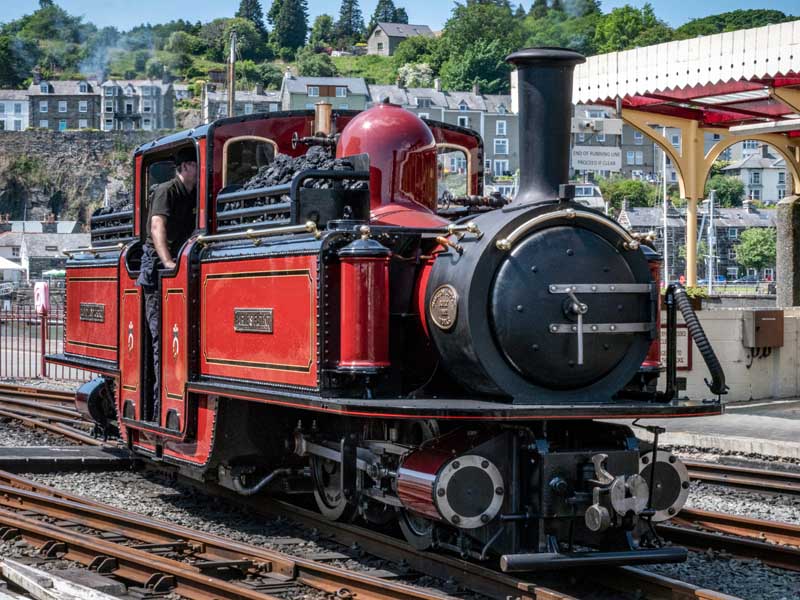
David Lloyd George
Built 1992
Named after Prime Minister and Liberal Caernarfon MP David Lloyd George, who grew up locally and travelled on the Ffestiniog when practising as a solicitor. Built new at Boston Lodge, the loco was used to carry the Commonwealth Games torch in 2002, and the Olympic torch in 2012.
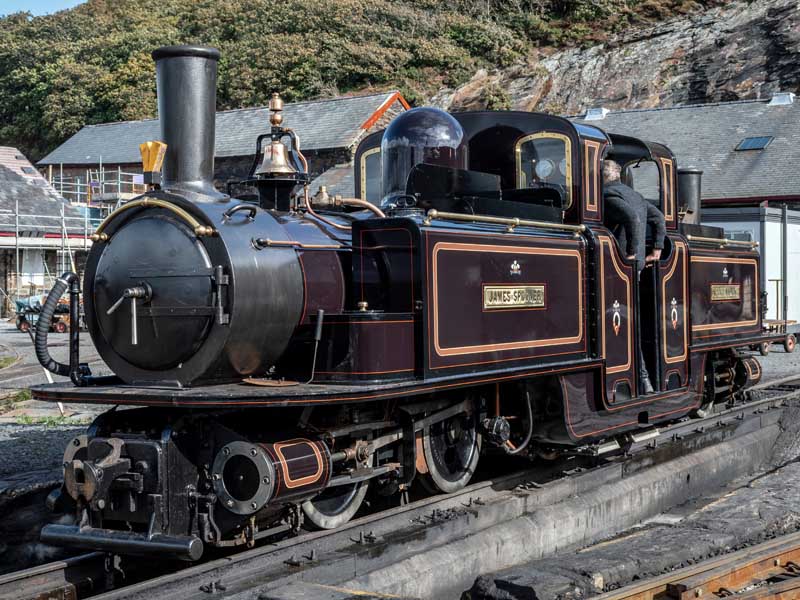
James Spooner
Built 2023
James Spooner was the surveyor and civil engineer responsible for building the Ffestiniog Railway in the 1830s. The first locomotive to be named after him was built in 1872, but this was scrapped in the 1930s. The present ‘James Spooner’ is a brand-new Double Fairlie, completed and named in 2023.
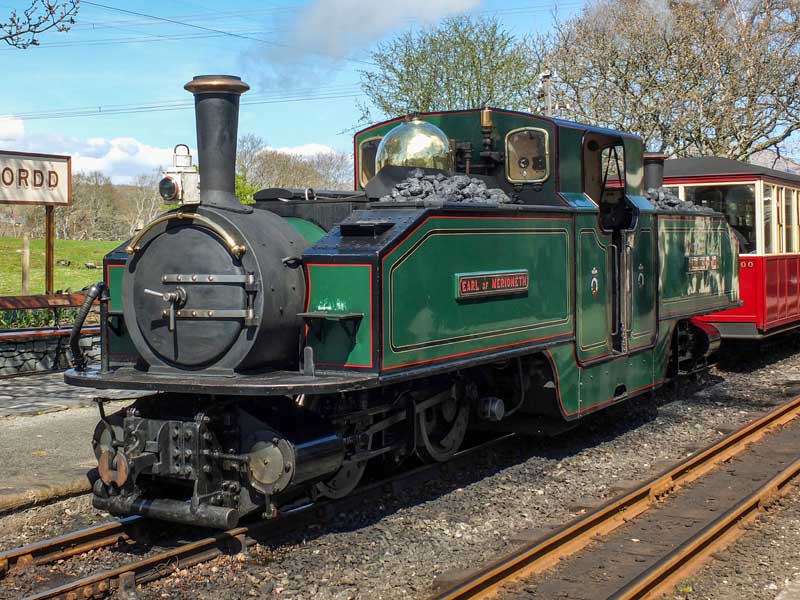
Earl Of Merioneth
Built 1979
The second locomotive to run with this name, a title created for Prince Philip in 1947. Designed and built at Boston Lodge to a modern design with an angular appearance, this unique-looking locomotive became a popular, hardworking member of the fleet. It is currently stored awaiting a restoration plan.
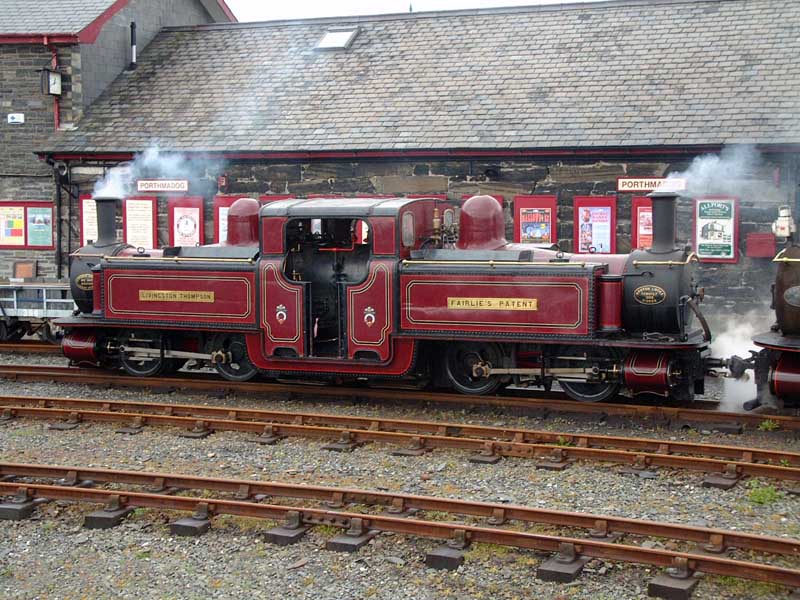
Livingston Thompson
Built 1886
Currently exhibited at the NRM, it has carried three different names. It was named originally after a shareholder, then renamed ‘Taliesin’ in 1932 and again, ‘Earl of Meirioneth’ in 1961. Withdrawn in 1971, it reverted to ‘Livingston Thompson’ so the previous name could be used on a new locomotive.
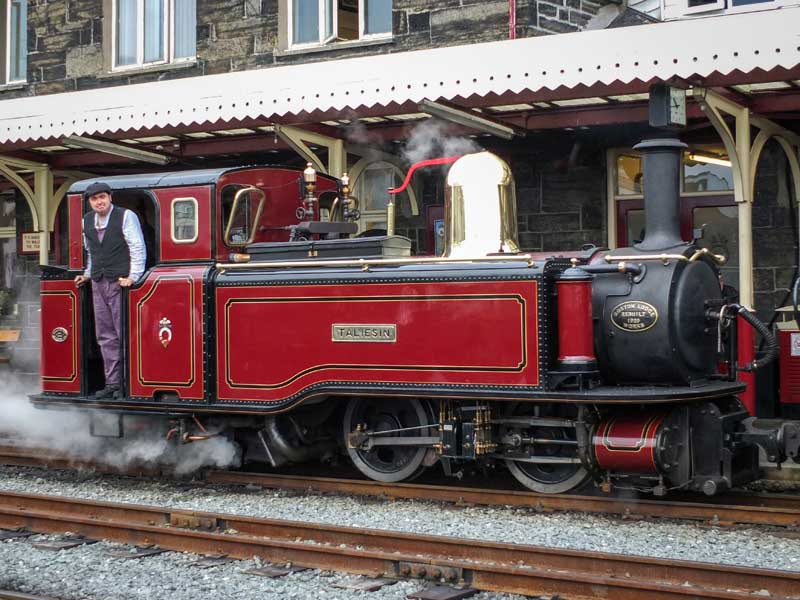
Taliesin
Built 1999
Named after a 6th century Welsh bard, ‘Taliesin’ is a replica of a Single Fairlie locomotive originally built in 1876 by Vulcan Foundry, Newton-le-Willows. The build was funded by 200 members making monthly payments over many years. It is a popular locomotive, being free-steaming and easy to crew.
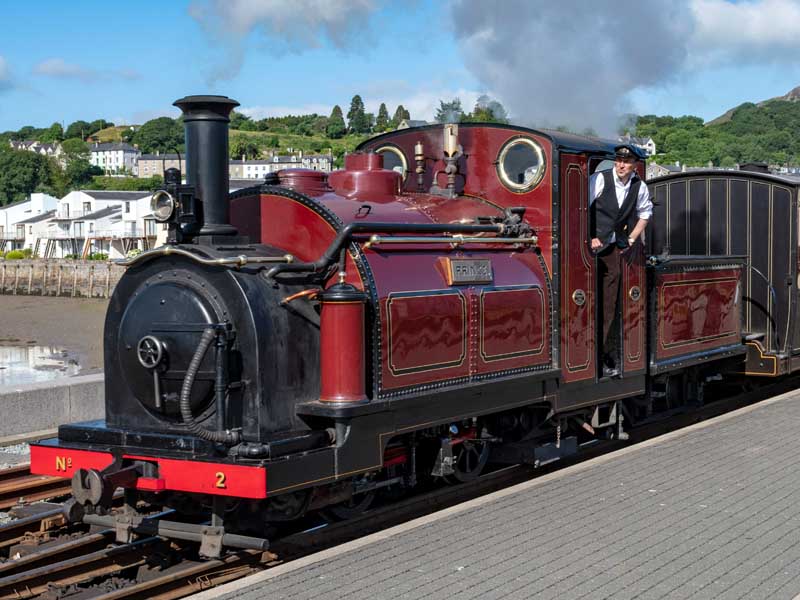
Prince
Built 1863
The world’s oldest operating steam locomotive still running on its original railway. ‘Prince’ was named after Albert, then Prince of Wales – and was driven by his great, great grandson Prince Charles in 2003. ‘Prince’ was the first steam locomotive used by the preservationists on the revived railway in 1955.
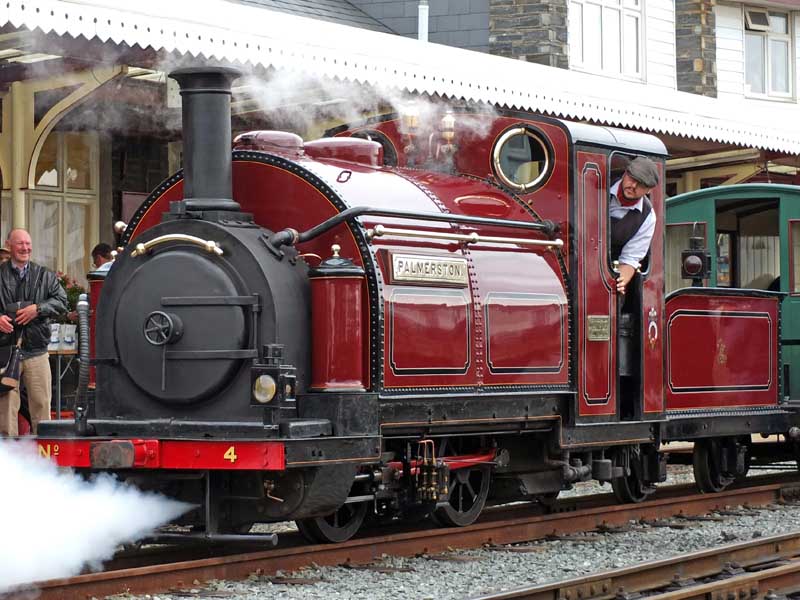
Palmerston
Built 1864
Palmerston’ is a well-travelled locomotive. It was used during construction of the NWNGR and was also loaned to the Vale of Rheidol Railway. In modern times it has visited the Bala Lake Railway, Kings Cross Station, the NRM in York – and even the Froissy Dompierre Light Railway in France.
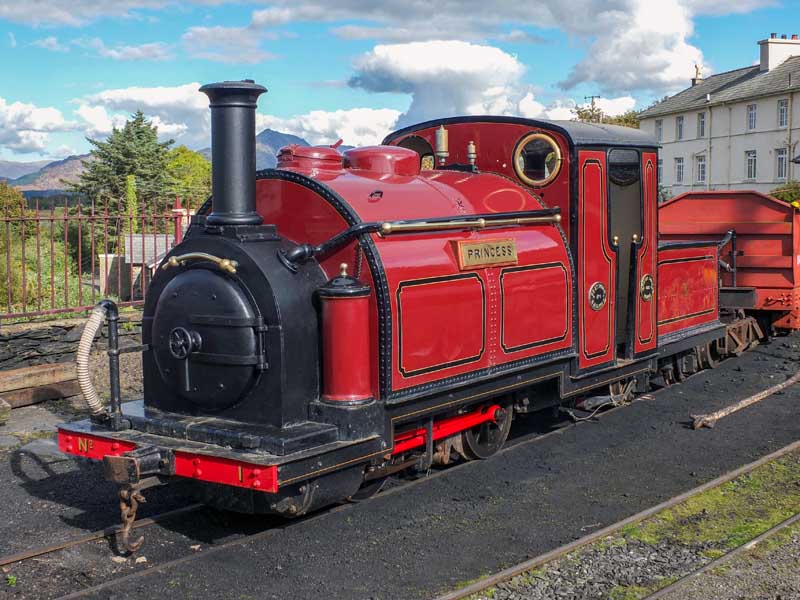
Princess
Built 1863
One of the Ffestiniog Railway’s four original locomotives, ‘Princess’ is named after the then-Princess of Wales, Princess Alexandra of Denmark. Displayed for many years inside Spooner’s Bar at Porthmadog, it received a cosmetic restoration in 2013.
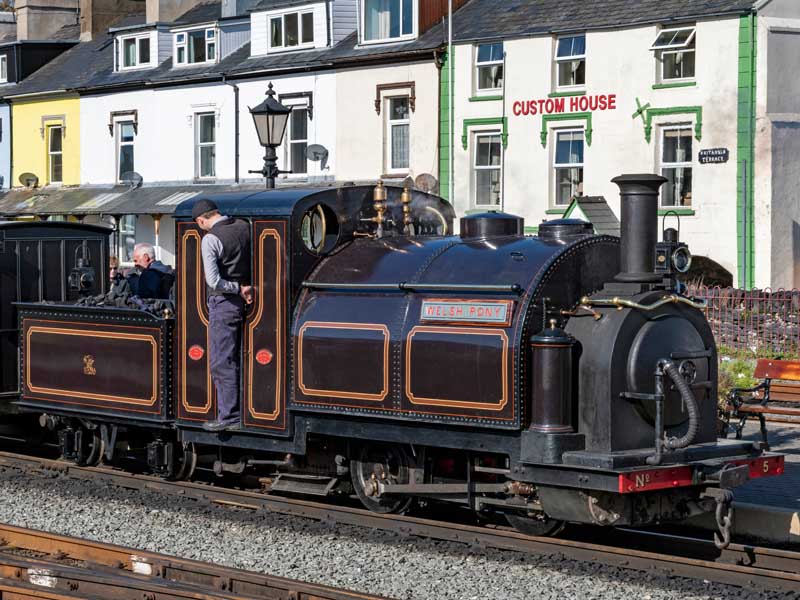
Welsh Pony
Built 1867
‘Welsh Pony’ worked for 75 years, before being out of service for 75 years. Considered ‘unfinished-business’ by early preservationists, ‘Welsh Pony’ returned to steam in 2020, following a fundraising campaign through the Ffestiniog Railway Society. It is now back in regular service.
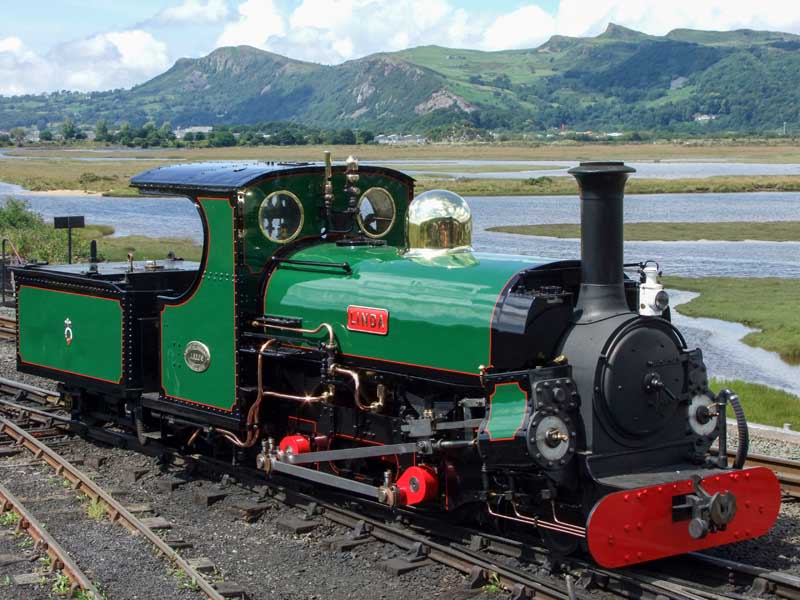
Linda
Built 1893
Named after the daughter of Penrhyn Quarry owner Lord Penrhyn, ‘Linda’ has seen many modifications since its arrival on the Ffestiniog Railway. It was the favourite locomotive of General Manager and driver, Allan Garraway. ‘Linda’ is known as one of the ‘Penrhyn Ladies’, along with her sister locomotive, ‘Blanche’.
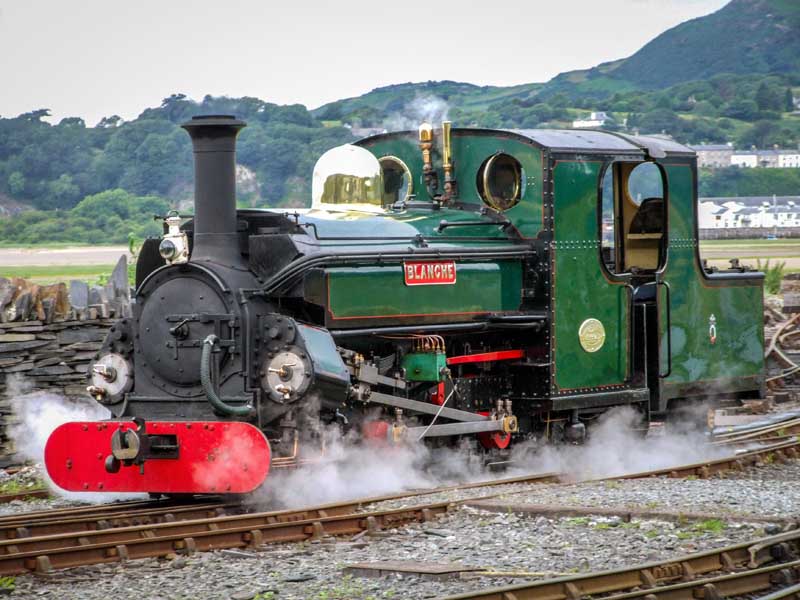
Blanche
Built 1893
‘Blanche’ was named after the wife of Lord Penrhyn. She arrived on the FR a year after fellow Penrhyn Lady ‘Linda’. Both locomotives worked tirelessly to keep Ffestiniog Railway trains running from the 1960s to the 1990s — and their 100th and 125th birthdays were celebrated with large steam galas.
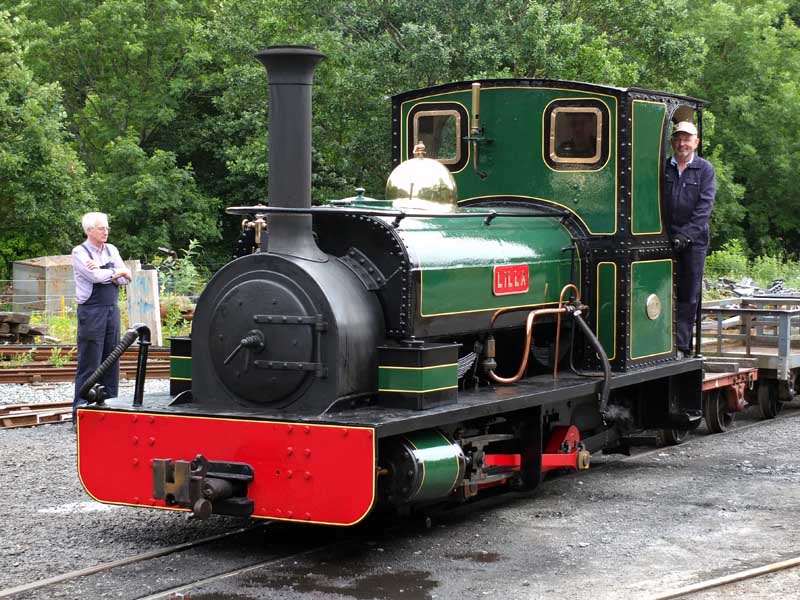
Lilla
Built 1897
Built for hauling slate in Cilgwyn Quarry, then sold to Penrhyn Quarry in the 1950s, ‘Lilla’ is a medium-sized Hunslet locomotive. Much of ‘Lilla’ is original, with the 19th century boiler only replaced in 2008. Not regularly used for passenger services, ‘Lilla’ is useful for basic training and shunting courses.
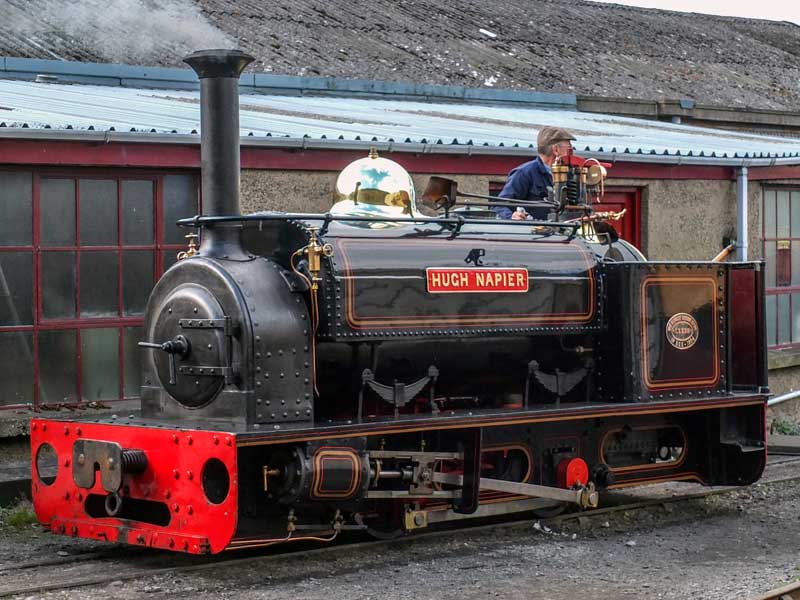
Hugh Napier
Built 1904
‘Hugh Napier’ worked in Penrhyn Slate Quarry, above Bethesda. The locomotive is owned by the National Trust, but with the FR as custodians. Taking over forty years to restore, ‘Hugh Napier’ is a small but strong engine, and is often seen in use for footplate rides, works trains and shunting.
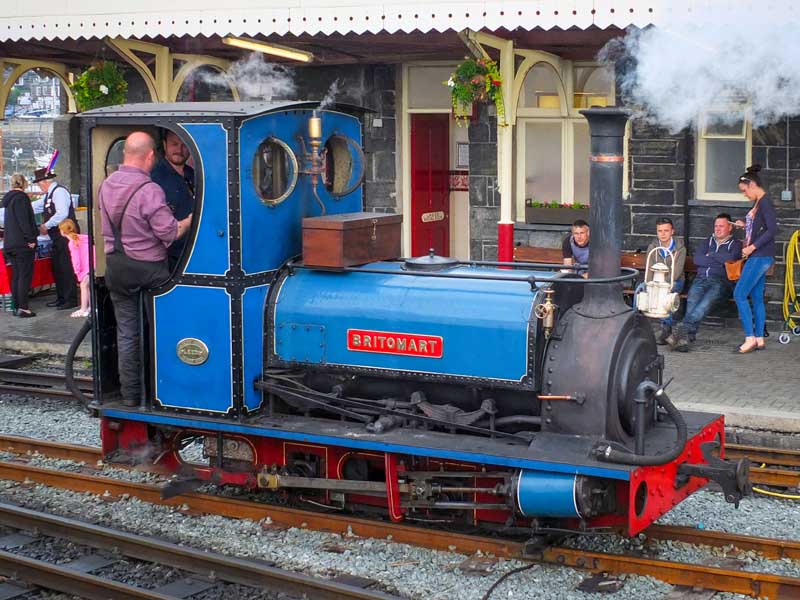
Britomart
Built 1899
Named after a female knight in ‘The Faerie Queene’, an epic 16th century poem, ‘Britomart’ was bought when the Pen-yr-Orsedd quarry closed down in the 1960s. Privately owned, it came to the Ffestiniog Railway for restoration and is now steamed for footplate rides, and on special occasions.
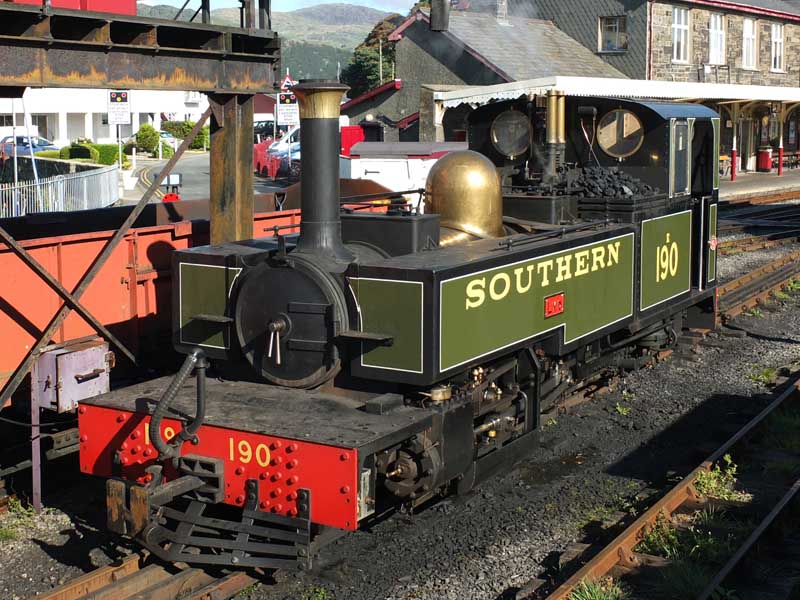
Lyd
Built 2010
A replica of a former locomotive of the Lynton and Barnstaple Railway in Devon, ‘Lyd’ continues a tradition of their locos being named after local West Country rivers. Although built at Boston Lodge, it has visited the L&BR on several occasions. ‘Lyd’ is very useful for hauling medium length trains.
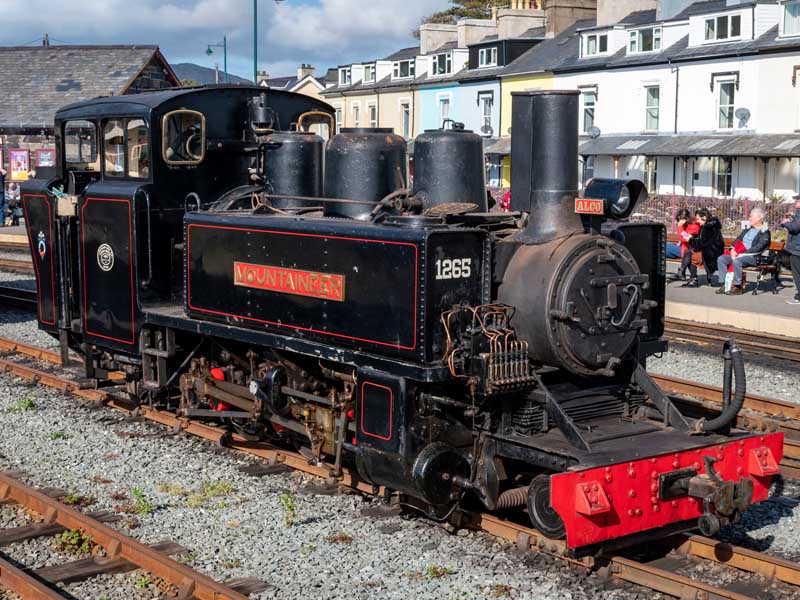
Mountaineer
Built 1916
Built in the USA for front line service in World War I, ‘1265’ remained in France until 1964. Donated to the railway by a Society member, it became a hard-working locomotive for many years. Also known as the ALCO, ‘Mountaineer’ is under restoration by a volunteer group and its return is eagerly awaited.
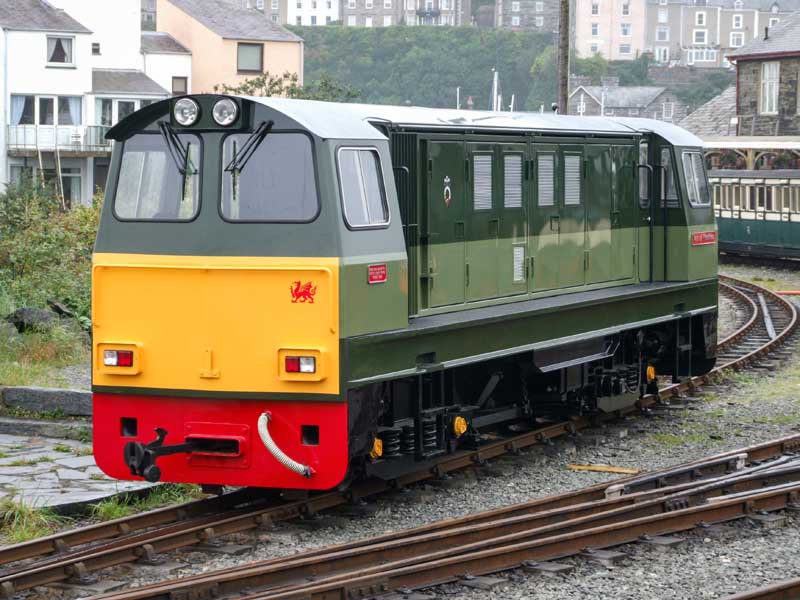
Vale Of Ffestiniog
Built 1967
Named after the valley through which the Ffestiniog Railway runs, this is the only locomotive in the diesel fleet with the power to deputise for the Double Fairlies when required. The locomotive was extensively rebuilt after moving from South Africa. This rebuild gave the locomotive a cab at either end.
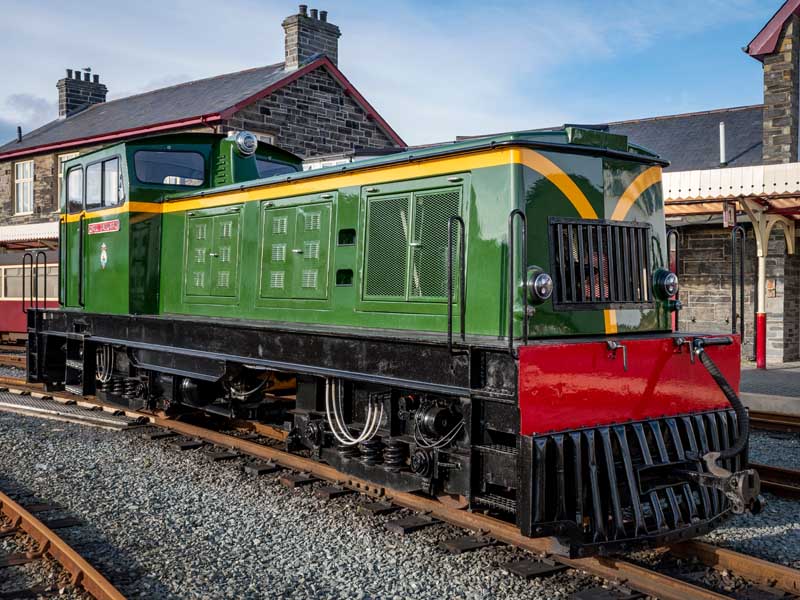
Castell Caernarfon
Built 1967
One of two diesel locomotives (built by C.H. Funkey) imported from South Africa in 1993, ‘Castell Caernarfon’ does not carry bilingual nameplates like some locomotives; it is just named in Welsh. This is a big diesel used specifically to work on the Welsh Highland Railway, pulling both works and passenger trains.
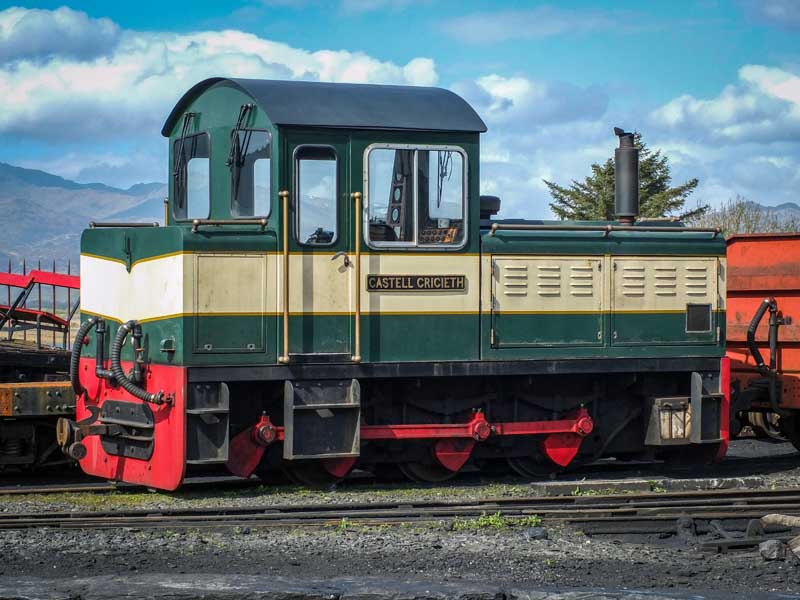
Criccieth Castle
Built 1995
‘Criccieth Castle’ was the first purpose-designed diesel constructed for the Ffestiniog Railway, being built at Boston Lodge from a kit of Baguley-Drewry parts. It is a powerful shunter, especially useful for moving carriages, and can pull six-carriage passenger trains if needed in an emergency.
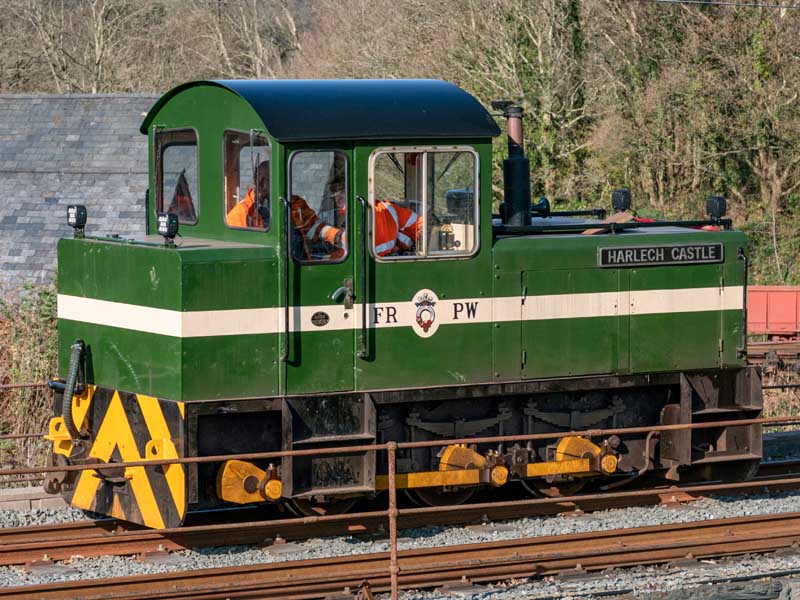
Harlech Castle
Built 1983
Originally built for a cancelled order to haul sugar in Mozambique, this new locomotive with a Caterpillar diesel engine was adapted for use as a dedicated locomotive for the Permanent Way department. Subsequent overhauls have seen it modified to closely resemble its half-sister, ‘Criccieth Castle’.
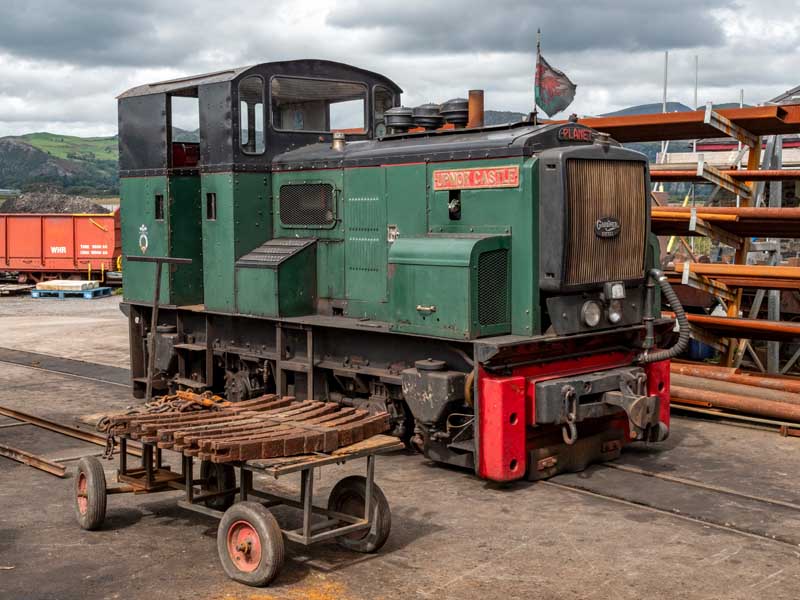
Upnor Castle
Built 1954
After military service in Kent, ‘Upnor Castle’ worked on the Welshpool & Llanfair Light Railway before being re-gauged for the Ffestiniog Railway in the 1960s. It played a key role during rebuilding the Welsh Highland Railway in the 1990s and 2000s. Capable of hauling passenger trains, it usually hauls works trains.
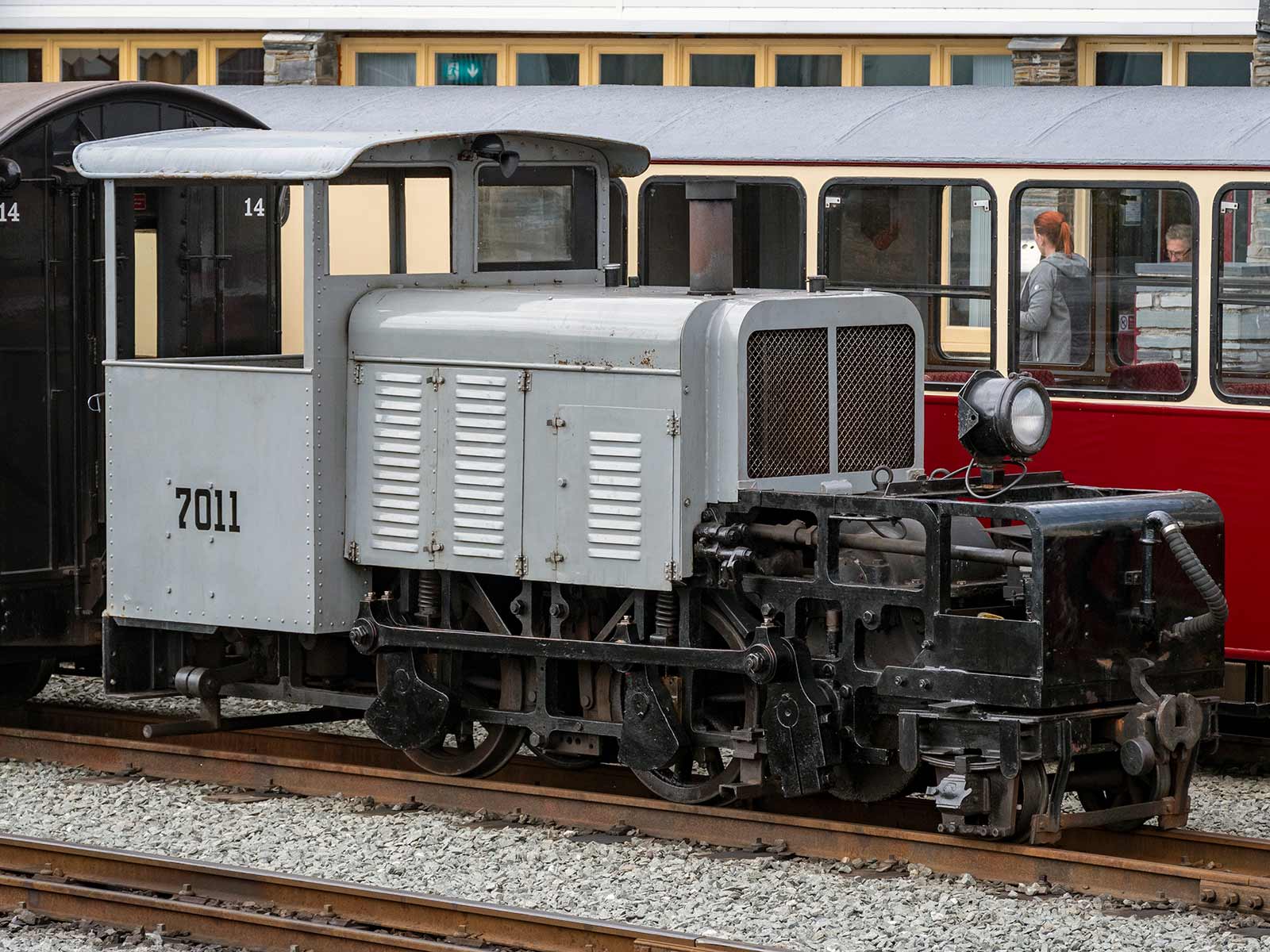
Moelwyn
Built 1918
Originally supplied for use on the light railways of World War I in France, ‘Moelwyn’ was bought as army surplus by Col. Stephens in 1925. After being heavily used for many years on small passenger trains and works trains, ‘Moelwyn’ now has a much gentler use as part of the heritage fleet.
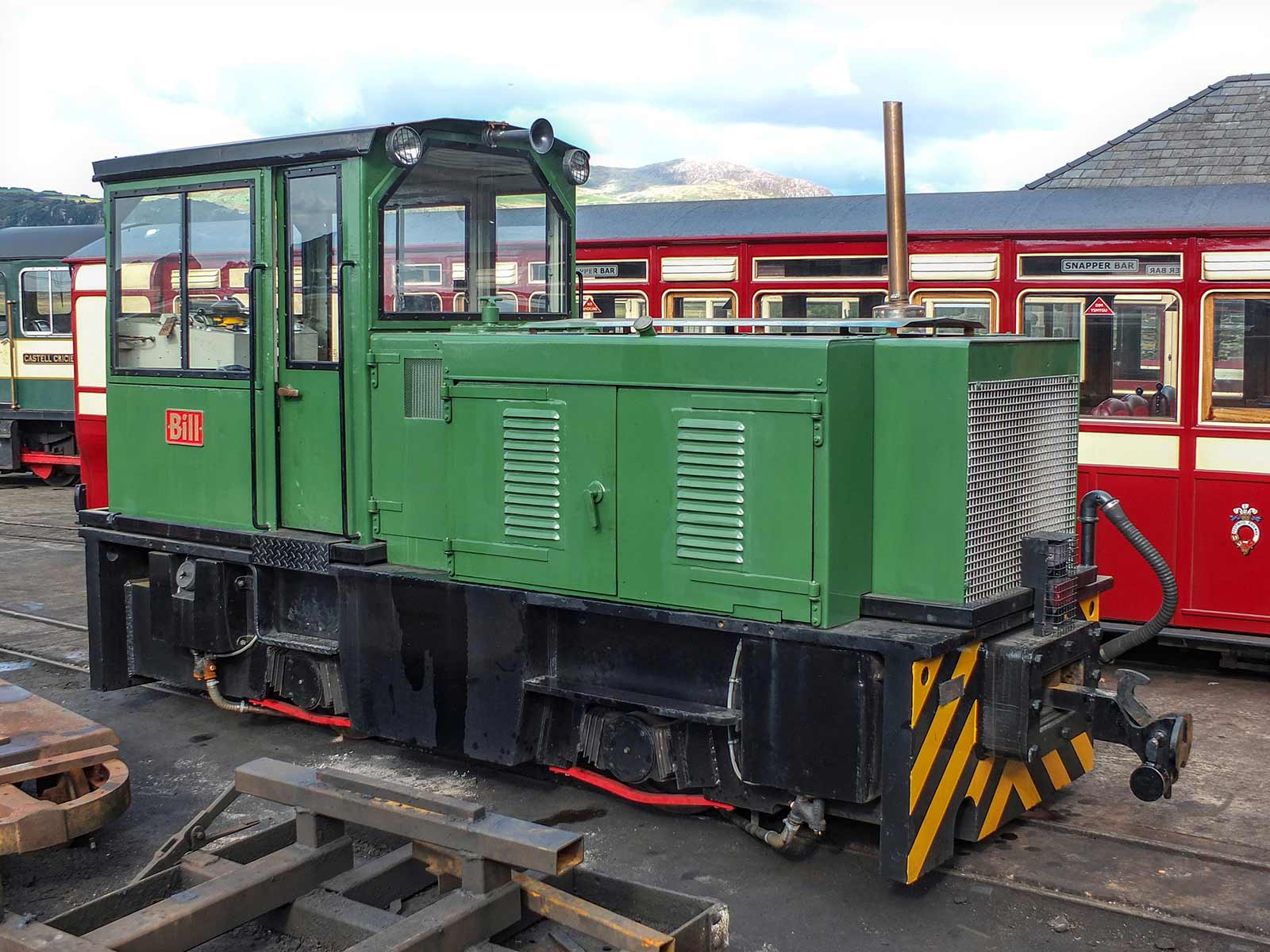
Bill
Built 1985
‘Bill’ is a four-wheeled diesel locomotive built by Hunslet. It carries the number 9248. It is one of a pair (the other being named ‘Ben’) that arrived at the Welsh Highland Railway in 2010, having previously worked at Shotton Steel Works. ‘Bill’ has been restored as a works shunting locomotive.
More detailed information regarding all of our locomotives can be found here.